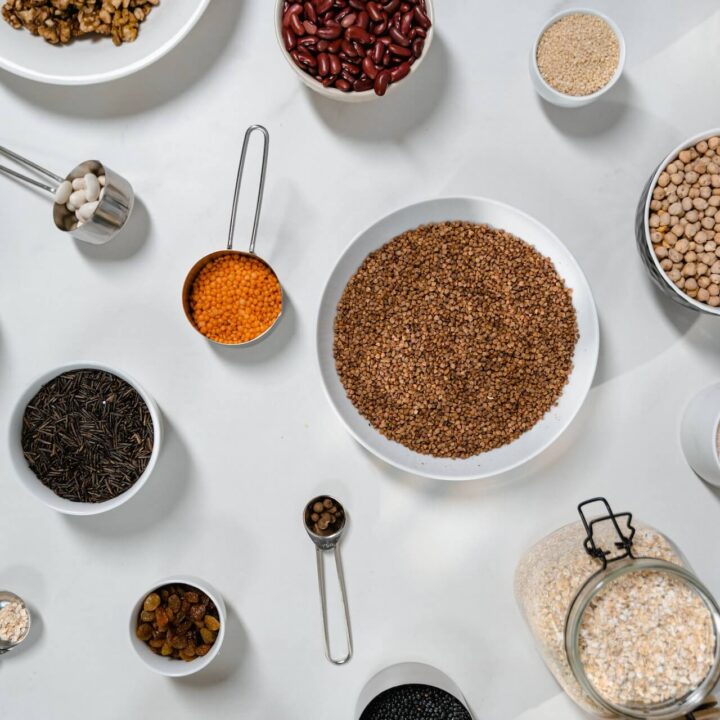
Forget Christmas, Easter, and birthdays. Halloween is THE holiday for candy and sweets. But for some parents, it means stressing out about how to handle Halloween candy.
But you know what? That's ok. The stressing part is ok. And the fact that they will come home with lots of candy.
Jump to:
Halloween – A Candy Holiday
This is one of those nights of the year where we can put aside our concerns about sugar and empty calories.
And not because it's not important. But because Halloween is a children's "holiday" that should be about fun and enjoyment and laughter. So we don't want to take that away from your kid. Or yourself 🙂
Is Halloween Candy Causing You Stress?

I do realize that some parents do feel concerned about leftover Halloween candy and how to appropriately handle it in the following days. I've even had parents so concerned about this that they just threw everything in the trash to avoid their kids binging.
I don't think that is a good idea. It's food after all. Comfort food that most of us do enjoy every once in a while. And that's ok. Because nutrition is all about balance in the end.
So how do you efficiently handle both Halloween and all that candy that might be left afterwards?
Luckily you can follow a few easy steps to make sure you don't go overboard!
Step-by-step on handling Halloween candy

Step 1 – Eat a balanced meal
Depending on the time of trick-or-treating for you and your kids, make sure you fill those tummies with a healthy and balanced meal. Whether it's lunch or dinner.
A balanced meal consists of protein, fats, produce (fruit or veggies), and a complex carb.
This way you will ensure that your child doesn't go trick-or-treating hungry with only candy and food on their mind, but full on a balanced meal that should keep them hunger-free until they at least return home.
Step 2 – Go out and have fun
Remember that this is the time to have fun and spend some quality time with your children!
And don't stress about the amount (or type!) of candy that they are getting. You'll deal with that later.
Step 3 – Remove choking hazards
When you're done with trick-or-treating and come home, it's a good thing to take all that candy and go through it with your child to:
- Avoid any choking hazards
- Talk with them about what they like and what they don't
So depending on your child's age, you'd want to remove any choking hazards, especially round and hard candy.
Step 4 – Sort the candy

So now when you've got your safe candy pile, you can sit with your kid(s) and discuss the candy, show each other your favorites and sort them into piles of the stuff they really like and the rest.
The reason for this is to remind our kids (and ourselves) to eat what we really like, and not just eat for the sake of it.
Lead by example when sorting candy, name it and discuss why you love a certain type and definitely don't comment if you see that your kid is sorting the really, really bad ones into their favorite pile.
Or putting everything in their favorite pile. Remember, you've given them a choice and they've made it.
Step 5 – Let them eat
Yes. Let them eat as much as they want. Tonight.
It won't make them obese or give them any non-communicable diseases but will show them that this holiday is about fun, enjoyment and that candy is not a forbidden fruit.
Chances are that after a whole day of balanced meals and snacks they won't really be able to eat huge amounts, especially now that they're allowed to, but definitely don't comment on how much they ate.
Step 6 – Go back to "I choose what to serve, you choose what to eat"
Once Halloween is over, it's time to go back to a normal routine.
Meaning you are the one in charge of what is served and when and your child decides whether they will eat, what they will eat, and how much of what. Meaning candy also.
So once you've packed away the leftover Halloween candy safely, it's time to make a plan when you will be taking it out and serving.
Generally my recommendation is to serve it with meals. And even at the same time as the main meal and/or snack. That way it's not seen as the prize at the end of the meal, but rather as just another part of the meal.
Ana, for example, gives her son a sweet snack (if she has one) after the afternoon nap (like 3 or 4 pm) so it doesn't interfere with bedtime but gives them a nice energy boost for the afternoon activities.
If you need more info on serving sweets (including post-Halloween ones), click here.

Need more info on handling holidays? Check these out:






Comments
No Comments